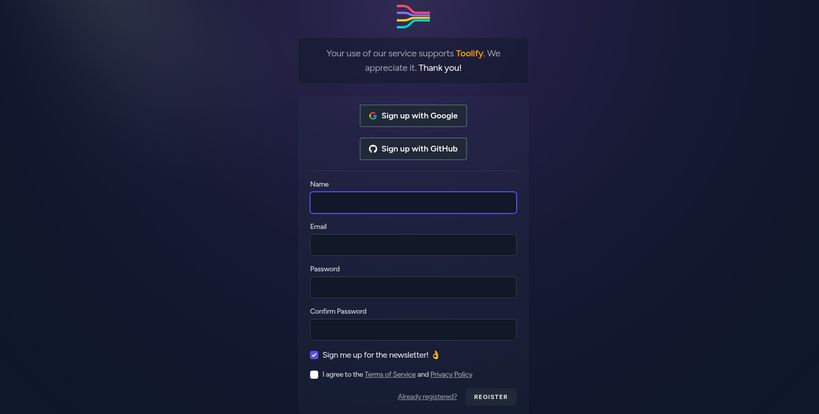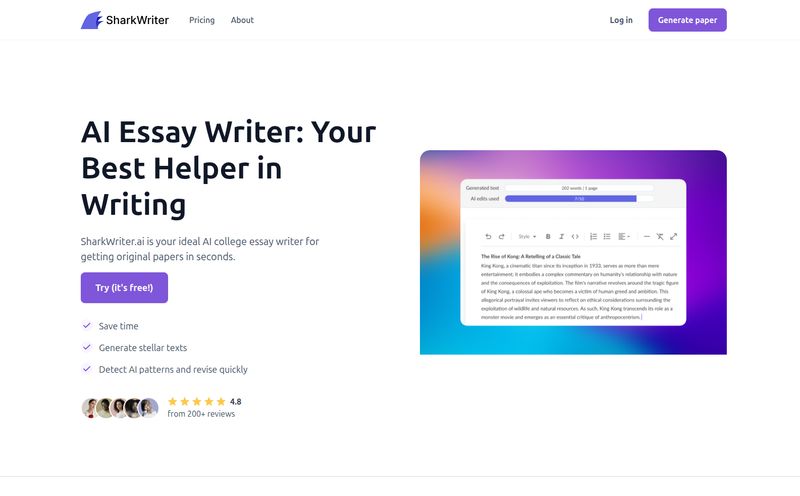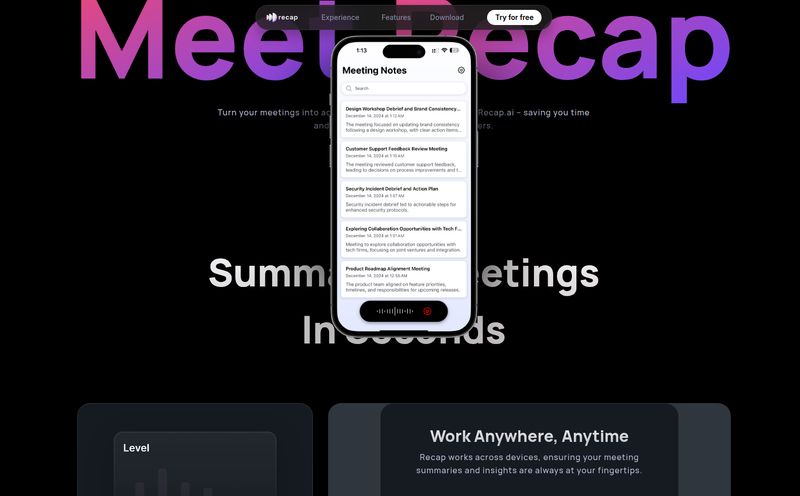The content treadmill is exhausting. As an SEO, I live and breathe content, but the sheer volume needed to stay competitive can feel like... well, a full-time job on top of your full-time job. We're all looking for that magic bullet, that tool that promises to take the grunt work out of content creation. Most of them overpromise and underdeliver. So when I stumbled upon a platform called LaminarFlow, which calls itself a "no-code AI content automation platform," my seasoned SEO senses started tingling. Skepticism and curiosity, all at once.
Is this just another AI writer with a fancy interface, or is it something more? I decided to roll up my sleeves, sign up, and see if LaminarFlow could really be the content assembly line foreman I've been dreaming of. This is my deep-dive, no-fluff review.
So, What Exactly is LaminarFlow?
Forget thinking of LaminarFlow as just another GPT-wrapper. That’s not what this is. The best way I can describe it is like Zapier or Make, but specifically designed for building content. It’s a visual canvas where you connect different modules, which they call Nodes, to create a content workflow, which they call a Flow. It's less of a writing tool and more of a content factory builder. You're not just writing an article; you're designing the entire process from data source to published post.
You can tell it to, for example, go check an RSS feed for a new topic, send that topic to an AI to brainstorm an outline, send that outline to another AI to write a draft, and then automatically publish the whole thing to your WordPress site. All while you’re sleeping. That’s the promise, anyway. It's about crafting data pipelines with a serious AI twist, and you don’t need to be a developer to do it.
First Impressions and Getting Started
The sign-up process was clean and simple. You've got your standard Google and GitHub one-click options, or the old-school email and password. No hoops to jump through, which I always appreciate. The interface has a modern, dark-mode aesthetic that's easy on the eyes.
I even managed to hit a 404 page by accident (don't ask), and the copy was genuinely charming: "We've hit a quirky little snag, but no worries, we're fixing it!" It’s a small thing, but it shows a bit of personality behind the curtain. It's not some sterile, corporate tool; it feels like it was built by people who get it.

Visit LaminarFlow
The Killer Features That Actually Matter
Okay, let's get into the meat and potatoes. A tool is only as good as its features, and LaminarFlow has some pretty interesting ones.
Building Workflows Without a Line of Code
This is the core appeal. The entire system is visual. You drag a Node onto a canvas, then drag another, and connect them with a line. It’s incredibly intuitive. If you can draw a flowchart, you can build a content automation workflow in LaminarFlow. This accessibility is huge. It opens up the world of programmatic SEO and content automation to people who, like me, would rather spend time on strategy than debugging a Python script.
The Power of Nodes: Your Content Building Blocks
The Nodes are where the magic happens. They are the individual workers in your content assembly line. You have a whole library of them:
- Data Source Nodes: These are your starting points. You can pull in data from FTP/SFTP servers, S3 buckets, or just a list of URLs. This is powerful for creating content based on your own proprietary data.
- Content Nodes: The Newsroom and Articles nodes are great for topic generation, pulling in fresh, relevant content to riff on.
- Web Browser Node: Now this is cool. This node can literally go to a webpage, read its content, and extract information for you to use in your flow. Think light-duty scraping without the headache.
- AI Nodes: Of course, this is the engine. You use these nodes to process the data you've gathered—summarize text, rewrite paragraphs, generate entire articles, you name it.
You chain these together to build your machine. Start with a Newsroom Node to find a trending topic, send it to the Web Browser Node to read the top-ranking article, feed that content to an AI Node to create a unique take on it, and then fire it off to WordPress. See the power here?
Seamless WordPress Integration is a Game-Changer
I've used tools that generate content in a flash, only to leave you with a folder full of .txt files that you then have to manually copy, paste, format, and publish in WordPress. It's a momentum killer. LaminarFlow's direct WordPress integration is, frankly, a godsend. It takes care of that final, tedious step. You can set it up to post as a draft or publish immediately, assign categories, add tags... it’s all there. For anyone looking to build niche sites or run an autoblog, this feature alone is worth the price of admission.
Customization and Control (Bring Your Own API Key!)
This is a big one for my fellow SEOs and power users. While LaminarFlow can handle the AI part for you, it also gives you teh option to use your own OpenAI API key. Why does this matter? It means you have full control. You can use specific models (hello, GPT-4o), manage your costs directly with OpenAI, and you’re not locked into whatever model the platform chooses for you. They also have features like variable injection and dynamic content swapping with <custom-tags>, which allows for a pretty sophisticated level of content templating.
The Pricing Puzzle: Let's Talk 'Units'
Alright, let's address the elephant in teh room: cost. When I went to check their pricing page, I couldn't find any concrete plans. It seems they might be updating it, or it's a bespoke setup. However, based on the documentation, LaminarFlow operates on a Unit-based system.
This is a double-edged sword. On one hand, it's a flexible, pay-as-you-go model. You're not locked into a high monthly fee if you only have light usage. On the other hand, it requires careful management. Certain nodes, like the Web Browser and AI nodes, consume Units with each run. If you set up a complex, high-frequency Flow, you could burn through Units faster than you expect. It's a model that rewards efficiency. My advice? Start with a simple Flow, monitor your Unit consumption closely, and then scale up. And definitely check their website for the most current pricing info, as this seems to be in flux.
The Good, The Bad, and The Unit-Based
So, after kicking the tires, what's the verdict? No tool is perfect, and LaminarFlow is no exception.
The biggest advantage is undeniably its no-code accessibility. It democratizes the power of programmatic content creation. The customizable workflows and direct WordPress integration are huge time-savers that can genuinely change how you produce content at scale. Being able to plug in your own API key is a massive plus for control freaks like me.
On the flip side, that Unit-based pricing model can be a little nerve-wracking. It’s not a simple, predictable monthly subscription, which can make budgeting tricky for agencies or freelancers. You need to be mindful of what your Flows are doing and how often they're running. Also, things like premium support are an add-on, not standard, which is something to keep in mind if you think you'll need a lot of hand-holding.
Frequently Asked Questions about LaminarFlow
Can I use LaminarFlow if I can't code?
Absolutely. That's its main selling point. The platform is designed around a visual, drag-and-drop interface. If you can understand a flowchart, you can build powerful content automations without writing a single line of code.
Does LaminarFlow write the content for me?
Yes and no. It provides AI-powered nodes that can generate text, rewrite content, or create articles based on your instructions and the data you feed them. However, you are the architect. You design the workflow, provide the prompts and data, and set the rules. It's an automation tool, not a magic 'write me a perfect article' button.
What is a "Node" in LaminarFlow?
Think of a Node as a single-task worker. One Node might be responsible for grabbing data from a URL. Another Node's job is to take that data and have an AI summarize it. You connect these individual Nodes together to create a full workflow, or "Flow."
Can I publish to platforms other than WordPress?
While the native WordPress integration is a key feature, the platform is flexible. Using its data handling nodes, you could potentially format content and send it to other systems via webhooks or other means, though it might require a bit more setup than the direct WordPress connection.
Is LaminarFlow expensive?
It depends on your usage. The unit-based pricing means it can be very cost-effective for smaller projects but could become costly for very large-scale, frequent automations. It's crucial to monitor your consumption. Since their public pricing isn't visible right now, I'd recommend contacting them directly for a quote based on your needs.
Do I need my own OpenAI account?
No, you don't need one to get started. But the platform gives you the option to connect your own OpenAI API key, which is a fantastic feature for more advanced users who want greater control over AI models and costs.
Final Thoughts: Is LaminarFlow Worth The Hype?
After spending some quality time with it, I'm genuinely impressed. LaminarFlow isn't just another AI writer. It's a true automation platform that understands the specific needs of bloggers, affiliate marketers, and SEO agencies. It’s for the person who sees content not as a series of one-off articles, but as a system. A machine to be built and optimized.
Is it a "set it and forget it" solution? No. You still need a good strategy. Garbage in, garbage out still applies. But if you're willing to invest the time to design smart, efficient Flows and keep an eye on your costs, LaminarFlow could be an incredibly powerful partner in your content operations. It has the potential to save you hundreds of hours and help you scale in ways that are simply impossible to do manually.
It's an ambitious tool, and I'm excited to see where they go from here. For now, it's earned a spot in my digital toolbox.



